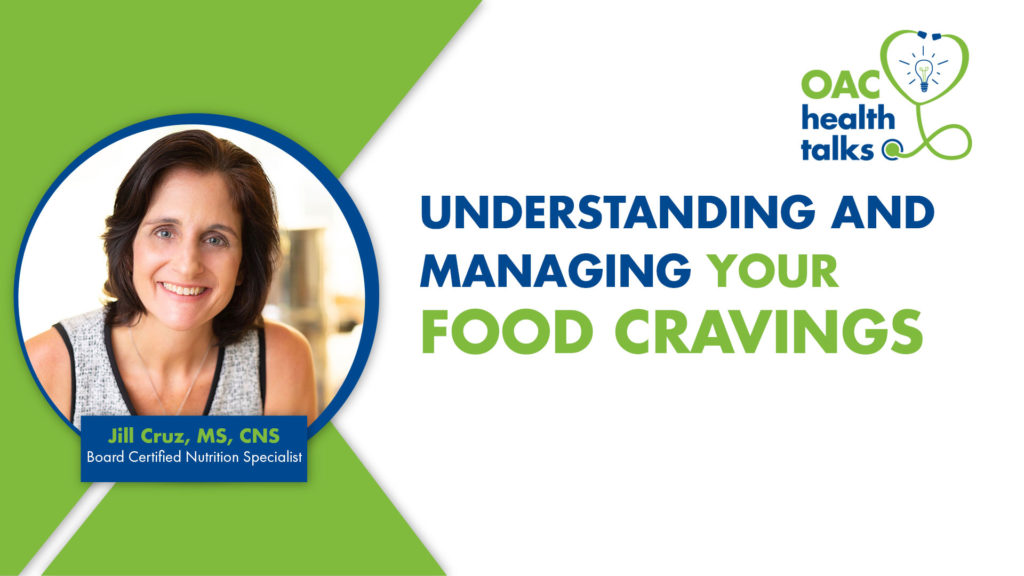
Understanding Food Cravings and How to Manage Them
You know that feeling when you’re trying to stick to a healthy diet, but all you can think about is that gooey slice of pizza or that decadent chocolate cake? We’ve all been there. That’s why we’re excited to introduce the “Understanding Food Cravings and How to Manage Them” product. In this article, we’ll explore the often elusive world of food cravings and provide you with valuable insights on how to manage them. Whether you’re looking to shed a few pounds or simply maintain a balanced lifestyle, this product is your go-to guide for conquering those irresistible temptations and achieving your wellness goals.
Table of Contents
ToggleUnderstanding Food Cravings
Food cravings can be a regular occurrence in our lives, and it’s important to understand the science behind them, the factors that contribute to their occurrence, and the different types of cravings we may experience. By gaining a deeper understanding of food cravings, we can learn how to effectively manage them and make healthier choices. So, let’s delve into the fascinating world of food cravings!
The Science behind Food Cravings
Neurotransmitters and Food Cravings
Neurotransmitters, such as dopamine and serotonin, play a significant role in food cravings. These chemical messengers in our brains are responsible for regulating our mood, emotions, and reward systems. When we consume certain foods, especially those high in sugar and fat, dopamine levels in our brain increase, resulting in feelings of pleasure and satisfaction. This pleasure-reward cycle can lead to cravings for specific foods.
The Role of Hormones in Food Cravings
Hormonal fluctuations can also contribute to food cravings. For example, during menstruation, women may experience cravings for chocolate or sugary treats due to hormonal changes. Additionally, the hormone ghrelin, which stimulates hunger, can increase cravings, particularly for high-calorie and high-carbohydrate foods. Understanding the hormonal influences on our cravings can help us better manage and respond to them.
Psychological Factors in Food Cravings
Psychological factors, such as stress, emotions, and environmental cues, can significantly contribute to food cravings. Stress triggers the release of cortisol, a hormone that can increase appetite and lead to cravings for comfort foods. Emotional states, such as sadness or boredom, can also drive cravings as individuals seek solace or distraction through food. Moreover, external cues, like seeing food advertisements or being in a location associated with certain foods, can trigger cravings. Being aware of these psychological factors can assist in developing strategies to manage cravings effectively.
Factors that Contribute to Food Cravings
Stress and Emotional Triggers
Stressful situations can often lead to food cravings as a form of coping mechanism. When we are stressed, our body releases cortisol, which can increase our desire for high-calorie foods. Additionally, emotions like sadness, loneliness, or boredom can trigger cravings for comfort foods as we seek temporary relief. By finding alternative ways to manage stress and emotions, such as through exercise or engaging in hobbies, we can reduce the frequency and intensity of these cravings.
Lack of Sleep and Food Cravings
Sleep deprivation can disrupt the balance of hunger-regulating hormones in our bodies, such as ghrelin and leptin. When we don’t get enough sleep, ghrelin levels increase, signaling hunger, while leptin levels decrease, reducing the feeling of fullness. This hormonal imbalance can lead to increased cravings for high-calorie foods. Prioritizing a good night’s sleep can help regulate these hormones and reduce the likelihood of succumbing to cravings.
Influence of Social and Environmental Cues
Social and environmental cues play a significant role in triggering food cravings. Simply being in the presence of others indulging in certain foods can make us crave those foods. Additionally, environmental factors, such as the sight or smell of food, can stimulate cravings. Being mindful of these cues and consciously making choices that align with our health goals can help us resist and manage cravings.
Different Types of Food Cravings
Sweet Cravings
Cravings for sweet foods are incredibly common, and they often stem from our innate preference for sugary substances. Sweet foods trigger the release of dopamine, giving us a pleasurable sensation. However, it’s essential to find healthier ways to satisfy these cravings, such as opting for naturally sweet fruits or incorporating alternatives like dates or honey into our diets.
Salt Cravings
Salt cravings are often a result of sodium imbalances in our bodies. When we consume excessive amounts of sodium, our body craves more to restore the balance. However, it’s crucial to be cautious with salt consumption due to its association with high blood pressure and other health issues. Flavoring meals with herbs and spices can be a beneficial alternative to satisfy salt cravings while reducing overall sodium intake.
Carbohydrate Cravings
Cravings for carbohydrates can be linked to a drop in blood sugar levels, triggering a desire for quick energy sources. However, it’s important to choose complex carbohydrates, such as whole grains and legumes, over refined or processed options to provide sustained energy and meet our nutritional needs.
Fat Cravings
Fat cravings can arise due to the comforting and satiating nature of fatty foods. However, indulging in unhealthy fats regularly can have adverse effects on our health. Opting for healthier fats, such as those found in avocados, nuts, and olive oil, can help satisfy cravings while providing essential nutrients.
Specific Food Cravings
We may also experience specific cravings for particular foods, such as chocolate, pizza, or ice cream. These cravings can be influenced by a combination of factors, including taste preferences, cultural associations, and personal experiences. While it’s not necessary to completely eliminate these foods from our diets, seeking healthier alternatives or practicing portion control can help manage these specific cravings.
How to Manage Food Cravings
Understanding Hunger vs. Cravings
To effectively manage food cravings, it’s crucial to differentiate between genuine physiological hunger and cravings driven by external factors. True hunger is the body’s way of signaling a need for nourishment, while cravings often stem from emotional or environmental cues. By tuning in to our body’s signals and distinguishing between hunger and cravings, we can make more informed choices.
Listening to Your Body’s Needs
Paying attention to our body’s needs is essential in managing food cravings. When we experience hunger, our body is indicating a need for sustenance, and it’s important to nourish ourselves with nutrient-dense foods. By listening to our body’s hunger and fullness cues, we can provide it with the necessary fuel without overindulging.
Meal Planning and Balanced Nutrition
Planning meals in advance and ensuring they include a balance of macronutrients can help prevent intense cravings. Aim for meals that contain a mix of protein, carbohydrates, and healthy fats, as these provide sustained energy and promote satiety. It’s also important to incorporate a variety of fruits, vegetables, and whole grains into our diets to fulfill our nutritional requirements.
Mindful Eating Techniques
Practicing mindful eating can be an effective strategy for managing food cravings. Mindful eating involves fully engaging with the eating experience, paying attention to taste, texture, and the physical sensations of eating. By slowing down, savoring each bite, and avoiding distractions, we can develop a healthier relationship with food, reduce cravings, and improve overall satisfaction with meals.
Identifying and Managing Triggers
It’s important to identify the triggers that contribute to food cravings and develop strategies to manage them. This may involve finding alternative ways to cope with stress or emotional triggers, removing or minimizing exposure to environmental cues, or seeking professional support when needed. By addressing the underlying causes of our cravings, we can effectively manage them and make healthier choices.
Alternative Strategies for Coping with Cravings
When cravings strike, it can be helpful to have alternative strategies in place to cope with them. Engaging in activities that distract us, such as going for a walk or practicing a hobby, can divert our attention from the craving. Additionally, incorporating stress management techniques like deep breathing or meditation can help reduce the intensity of cravings.
Seeking Support and Accountability
Seeking support from friends, family, or professionals can be immensely beneficial in managing food cravings. Sharing our struggles and goals with someone we trust can provide encouragement, accountability, and motivation. Consider joining a support group or working with a registered dietitian or nutritionist who can provide personalized guidance and strategies.
Avoiding Restrictive Diets
Restrictive diets that eliminate entire food groups or severely limit calorie intake can often lead to intense food cravings. Instead of depriving ourselves, it’s important to adopt a balanced and sustainable approach to eating. Allowing ourselves to enjoy our favorite foods in moderation can help prevent feelings of deprivation and reduce the likelihood of intense cravings.
The Role of Physical Activity
Physical activity not only contributes to overall health but can also help manage cravings. Engaging in regular exercise releases endorphins, which can improve mood and reduce stress, ultimately diminishing the intensity of cravings. Additionally, incorporating physical activity into our daily routine can enhance self-control and increase our awareness of our body’s needs.
Seeking Professional Help
In some cases, seeking professional help may be necessary to address underlying issues related to food cravings. If cravings significantly interfere with your ability to maintain a balanced and healthy lifestyle, consider consulting with a registered dietitian, nutritionist, or mental health professional who specializes in disordered eating or food-related issues. They can provide personalized guidance and support tailored to your specific needs.
Understanding Hunger vs. Cravings
Differentiating Between Hunger and Cravings
Understanding the distinction between genuine hunger and cravings is crucial in effectively managing food intake. Hunger is a natural physiological response to the body’s need for nourishment, and it typically manifests as a gnawing sensation in the stomach. Cravings, on the other hand, are often triggered by external cues or emotional factors and are directed towards specific foods. By learning to identify and differentiate between the two, we can make more mindful choices about what and when to eat.
Physical vs. Emotional Factors
Hunger is primarily driven by physical factors, such as a drop in blood sugar levels or an empty stomach. It gradually builds up over time and can be satisfied by providing the body with a balanced meal or snack. Cravings, however, are often prompted by emotional factors like stress, boredom, or specific memories associated with certain foods. These cravings may emerge suddenly and intensely, leading us to reach for comfort foods or unhealthy snacks. Recognizing the emotional triggers behind cravings allows us to find healthier ways to address those emotions instead of relying on food.
Looking to understand and manage your food cravings? This article provides valuable insights and strategies to conquer those irresistible temptations and achieve your wellness goals.





